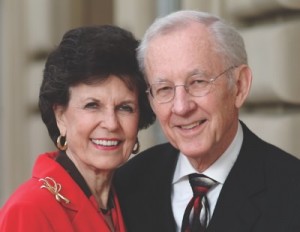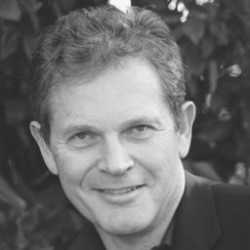Ask any pewstor—a term coined by Fuller Professor of Communications Carolyn Gordon for “the person sitting in the pew”—if worship is an important aspect of his or her spiritual life and the answer is likely to be “yes.” Ask the pastor of a congregation if the weekly corporate worship service is a vitally important aspect in the life of the congregation, and again the answer will most certainly be “yes.” Therefore, I think it safe to say that, to the church, worship matters.
Once I was asked, “What do you have if you take the arts out of worship?” Though it sounded like the set up for a joke, I sensed there was a serious response coming my way, so I asked for the answer. “A lecture and a prayer meeting,” was the reply. I spent a considerable period of time thinking about that offhand comment. It was a revelation for me.
In many religious traditions around the globe, the arts are an integral part of spiritual life. Not only do they play a vital role in worship, they frequently, for better or for worse, define it. In traditions where visual art, movement, and instruments are forbidden in worship, singing remains an important means through which believers confess, praise, mourn, hear God’s voice, sense his presence, deepen their understanding, and grow in their faith. Imagine worship if the arts were deemed irrelevant and all art forms were extracted. We’d lose the Psalms, as well as other beloved and theologically significant portions of Scripture that are written in the form of poetry, prose, song, and even theater.
In a 2011 interview in World Literature Today by writer Michelle Johnson, poet and former Director of the National Endowment for the Arts Dana Gioia stated:
The physical sound and verbal rhythm of a poem needs to arrest the reader’s attention and create a moment of imaginative openness and emotional vulnerability. This enchantment is what allows poetry to communicate so deeply. Without it, the language remains narrowly functional and prosaic. My second assumption is that a good poem is a sort of dance between the text and subtext. The surface of the poem should powerfully capture the reader’s conscious attention so that the subtext is free to speak to the reader’s intuition and imagination. These two notions are fundamental to my poetic practice.
Isn’t this what the Psalms and other poetic passages of the Bible do? Arrest our attention, open and engage our imagination, and break down barriers emotionally and intellectually? I believe Gioia’s fundamental notions apply not only to poetry but to all art forms, especially within the context of worship. As Calvin Institute of Christian Worship Director John Witvliet points out, the arts are not only expressive but formative. Not merely art for art’s sake, but for faith’s sake.
Is the study of worship and the arts valuable to a theological education? As pastors and pewstors resonate with the above, it is safe to assume the answer is a resounding “yes.” In fact, most of us pewstors assume the study of the history and practice of worship is an important part of a seminarian’s training. Unfortunately, at many seminaries, including Fuller Theological Seminary, this has not always been the case. Most seminary professors acknowledge worship as important to the church and an individual’s spiritual formation. Yet the academy as a whole typically devotes minimal time and resources to its study. In 1999, my wife, Dottie, and I were called to Fuller to assist in the creation of a center for worship, theology, and the arts. We were shocked to discover that a course in worship was not required in the MDiv program and that it was possible for students to graduate without having a single class related to worship beyond preaching.

In their travels across the U.S., Fuller Trustee William F. Brehm and his wife, Delores—affectionately known as Bill and Dee—attended worship services that demonstrated this lack of education in worship. At times it seemed to them as if the senior pastor and the minister of music hadn’t met or, worse, weren’t speaking to one another. Resolved to do something to rectify this sad state of affairs, they initiated a conversation with Fuller President Richard Mouw in 1992. He acknowledged the need for a program that could provide musicians, artists, and pastors with a deeper understanding of worship, its theological underpinnings, and ways in which the arts can be thoughtfully employed. Dr. Mouw also realized the arts provide fundamental insights into a culture—insights that are important not only to theologians but missiologists and psychologists as well. What emerged from these conversations was the formation of the Brehm Center for Worship, Theology, and the Arts in March 2001.
The Center seeks to provide an innovative space for students to explore the creative integration of worship, theology, and arts in culture, so that pewstors might worship God in a deeper and more meaningful way.
This article was published in Theology, News & Notes, Spring 2012, “Groanings Too Deep for Words: Engaging the Senses in Worship, Theology, and the Arts.”

